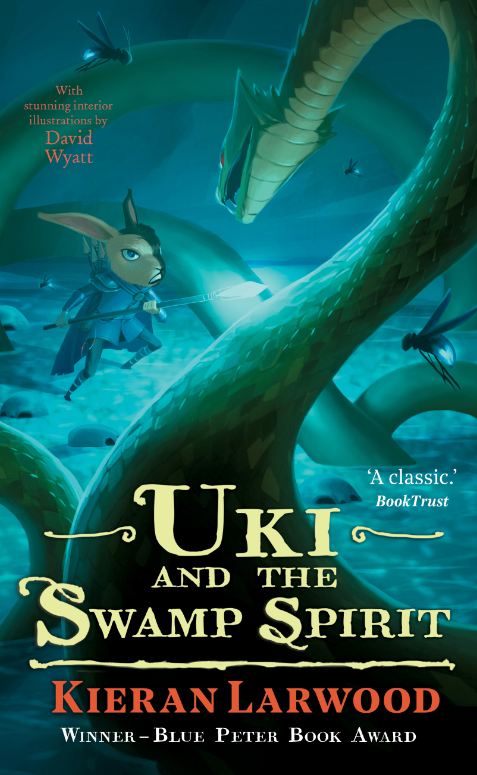I thought it might be useful to describe the process I went through when I created the fantasy world of the Five Realms for my series of children’s books, so that other writers might avoid my mistakes, or maybe get a bit of inspiration along the way.

I’m always a bit wary of ‘how to’ guides, as I think everyone works very differently, but this is how I do it. If you’re also a detail-obsessed planner who’s a bit short on spare time, maybe it will work for you.
“I wisely started with a map.”
That’s what Tolkien said about this world-building business and, being a lifelong fantasy geek and Middle Earth fan, I knew not to argue with the big man.
Drawing out your world is a great starting point, and can also kickstart the creative process. I use it in workshops with children, and hear them building the story as they go along, deciding who is going to live where and, usually, what kinds of horrible, gory things they are going to do to each other.
Sometimes, you add things on a map just because it looks right (or to fill up that annoying bit of blank space) and it will trigger off an idea that then becomes integral to your story. I slapped a giant forest into my map when I first drew it, and the entire third book of the series ended up being set there. So, you never know…
But, as anyone starting out on creating their own fantasy story (or stories) soon finds out, there’s a lot more to it than just drawing some squiggly coastlines and scrawling names on everything.
 After the Big Idea
After the Big Idea
So, you’ve had a sudden flash of inspiration and decided to write an entire series of novels set in an underwater world of robotic badgers and zombie mermaids. You’ve sketched out your map, named and labelled it all, and are now sitting in front of a blank screen/page ready to go. But what about the details? What are the days of the week called in your world? What batteries do the badgers run on? What language do they speak? What is their religion?
All these elements are vital for creating a convincing fantasy world. After all, we’re asking the reader to take a leap– to willingly suspend belief and accept that animals can talk, or that mermaids are actually flesh-eating monsters– but this becomes easier for them to accept if the world we are showing them is fully-rounded. As intricate and multi-layered as our own.
I realised a map wasn’t enough as soon as I started trying to create a plot outline, and so I decided to make a ‘bible’ for my new world. I chose a new notebook (any excuse to buy a new notebook is a good one) and started jotting down every idea I could think of.
Don’t do it all at once
My first approach was to spew out everything: bits of history, types of cheese, family trees of ruling dynasties... I tried to fill a few pages every day– and it was great fun– but I soon became swamped and side-tracked, and I realised that half of the stuff I was inventing would never actually be used in the book.
Instead, I found it more useful to create background around my planning. For example, if I knew part of the story was taking place in a certain city, I would spend a bit of time planning the place out, maybe making up a bit of history, names of the major characters and so on. Just enough to add a layer of convincing detail.
Then, if it needed fleshing out a bit more, I would pause the writing and go back to the world-building. The whole thing became a two-way process which ensured I had all the detail I needed, and that I wasn’t wasting a day creating obscure nonsense that I was never going to use.
Editing the world
As any writer knows, a story can change drastically between edits, shedding chapters and characters like a bad case of dandruff.
This probably means that your world will change too, so don’t spend too many hours lovingly scribing maps and intricate details in pen (like I did) or your bible will soon look like an explosion in a Tipp-Ex factory (other brands of correction fluid are available).
Pencil everything in, and don’t get too attached to your creations. But also, don’t throw anything out completely. Parts that don’t work can be transplanted somewhere else– or even moved to another project completely.
I hope that advice has saved you all a bit of writing time. World-building can be the most enjoyable part of fantasy writing: it’s just pure imagination without having to worry about plot or progression. Make sure you have fun with it, and good luck!
Kieran Larwood has loved fantasy stories ever since reading The Hobbit. He worked as a teacher and has just about recovered. He now writes full-time although, if anybody was watching, they might think he just daydreams a lot. His mapping out of the world of The Five Realms is second to none, so it's no wonder his books are such an immersive thrill. The latest installation in The Five Realms series, Uki and the Swamp Spirit, is out now on eBook and publishes in hardback on 7th January 2021.
Comments